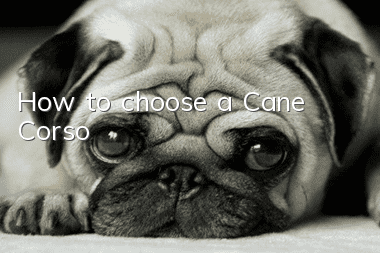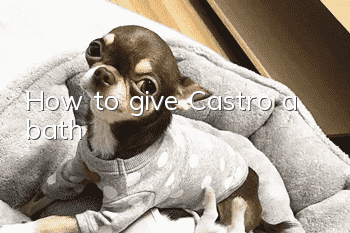How to choose a Cane Corso

How to choose a Cane Corso? Lift the Cane Corso up with your hands and pinch the whole body to see if there is any discomfort. Look at the pace of walking and running. Pat the Cane Corso's butt or back to try to bite back. Movements are excellent, you will struggle if you grab it and charge forward; your eyes are clear and bright, your nose is moist and cold, etc.;
1. Physical condition
⒈Choose your favorite card and lift it up, use your hands from the front paws to the head, and make a pinching sliding motion along the rear tail and lower limbs. If Xiaoka feels any discomfort, move each joint to see if Xiaoka is unwilling to do certain movements. This is done to check if the puppy has any broken bones or bone injuries.
⒉Put the small card on the ground and let it walk or run naturally to see if its gait is steady and strong. Is there any shaking left and right? The shaking is caused by the loss of mobility caused by long-term malnutrition. At this time, clap your hands or call it to see if it responds. If there is no response, you may be deaf.
⒊ There are no obvious disabilities or scars on the body. The proportion of the head, body and limbs is considered excellent, and some parts are average if it is thicker or larger.
2. Personality status
⒈Slap several small dogs on the back or buttocks one by one. Those who have the desire to bite back are excellent. Those who immediately lie down or grunt out of fear are average.
⒉ Pick up Xiao Ka and rush forward on his back. Those who twist and struggle vigorously are excellent, while those who stay still and let others caress them are average.
3. Health status
⒈ Eyes: clear and translucent, without excessive eye feces, no abnormal spots in the whites of the eyes, and the color should be similar to that of hair.
⒉ Nose: moist and cold (except when sleeping), no symptoms of nasal discharge or dryness.
⒊ Teeth: White and bright, uniform, missing teeth and protruding upper jaw are not allowed. Protruding lower jaw or parallel bite is allowed.
⒋Hair: The color of the whole body is within the standard range, with little or no dandruff, and the hair is gradual and orderly, and cannot be longer than 5 cm.
⒌Buttocks: Carefully observe whether the hair around the buttocks is stained with feces. Normal defecation will not stain the surrounding hair. If there are hard scabs or dirt, it means that you have had diarrhea before.
⒍ Feces: This is the most overlooked point. All dogs excrete different feces, which is specifically related to the food they are fed. The shape of the feces should be visible as strips. Completely watery and pasty is a sick dog. Feces can be yellow or brown and rarely white. Black and bloody feces are not allowed. These are diseased feces caused by poor intestinal function.
- How to bathe a Cane Corso
- How to feed a Chihuahua to gain weight
- What are the symptoms of calcium deficiency in German Shepherd dogs?
- How do you tell if a Doberman is pure or not?
- What are the advantages and disadvantages of Castro
- How to cut German Shepherd nails
- How to judge the appearance of a Chihuahua
- How do you judge whether Pomeranian is pure or not?
- How to train a Pomeranian to use the toilet
- How to train Pomeranian to toilet



